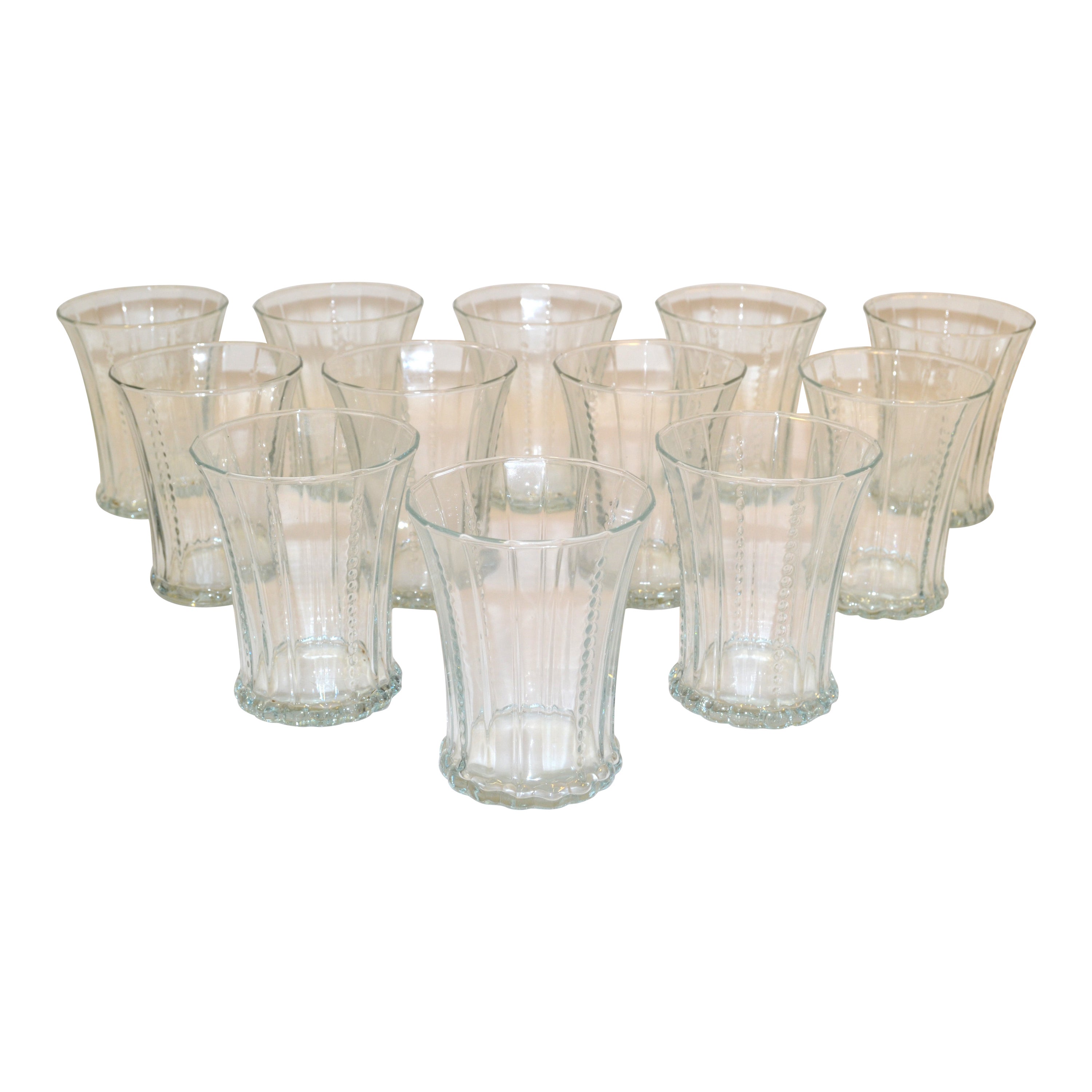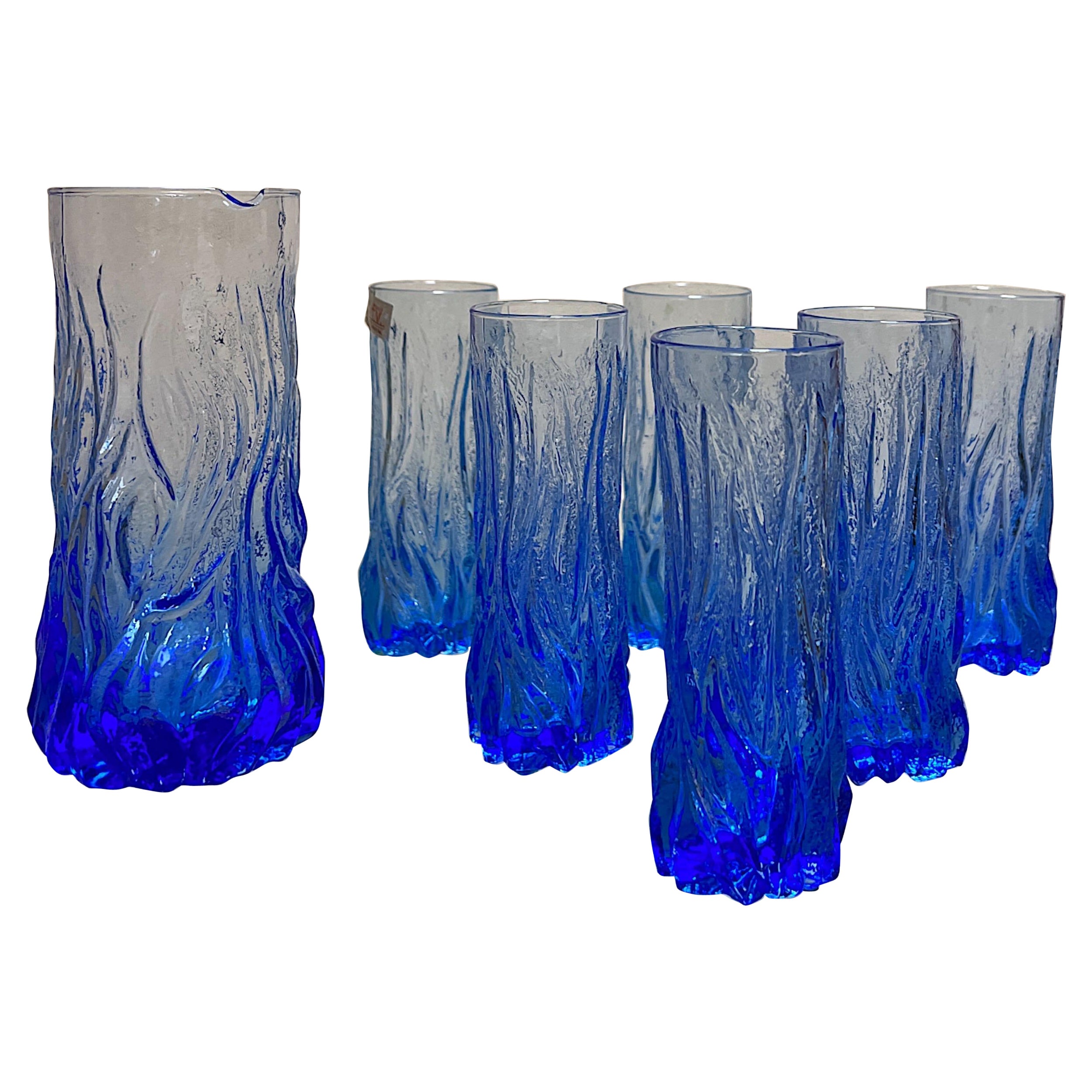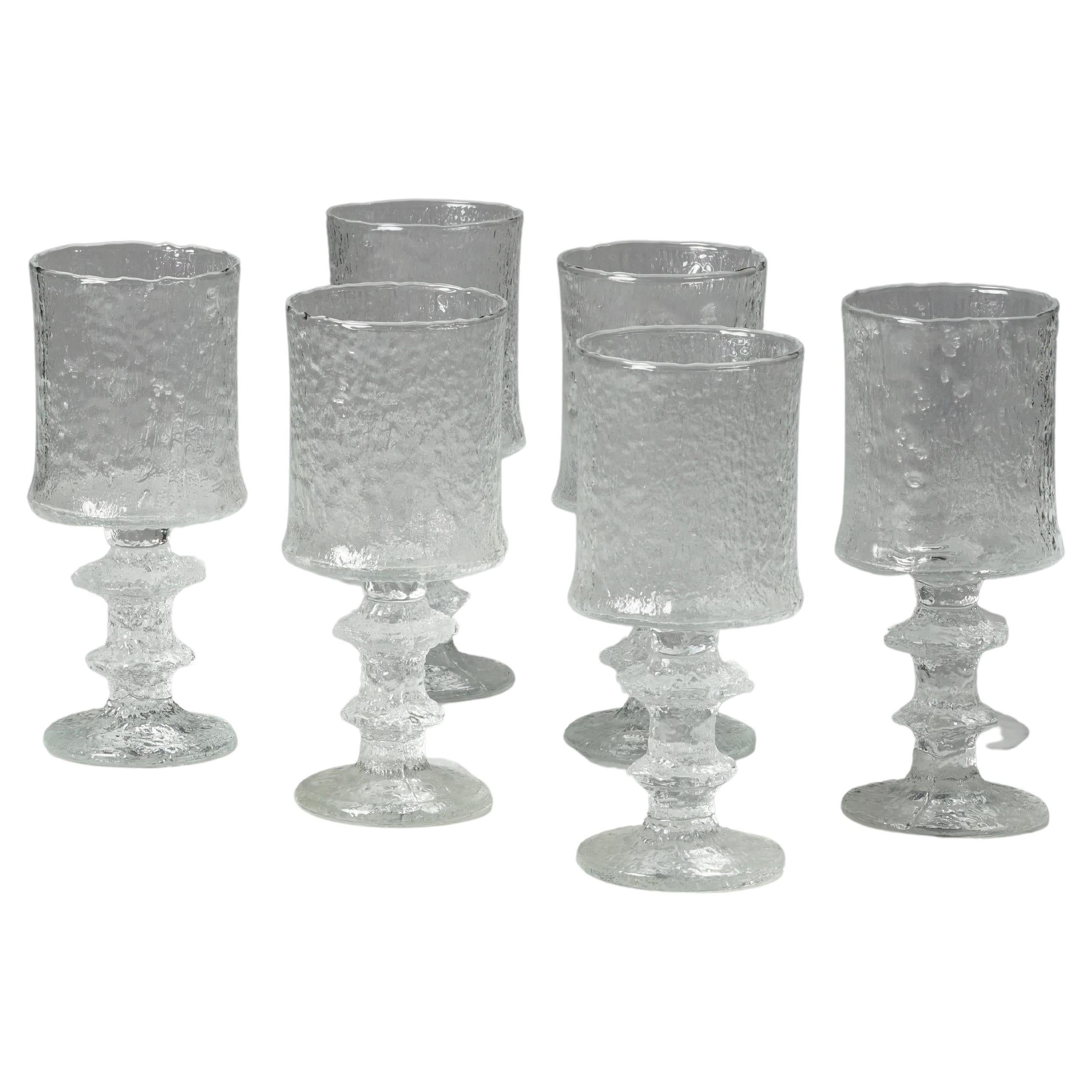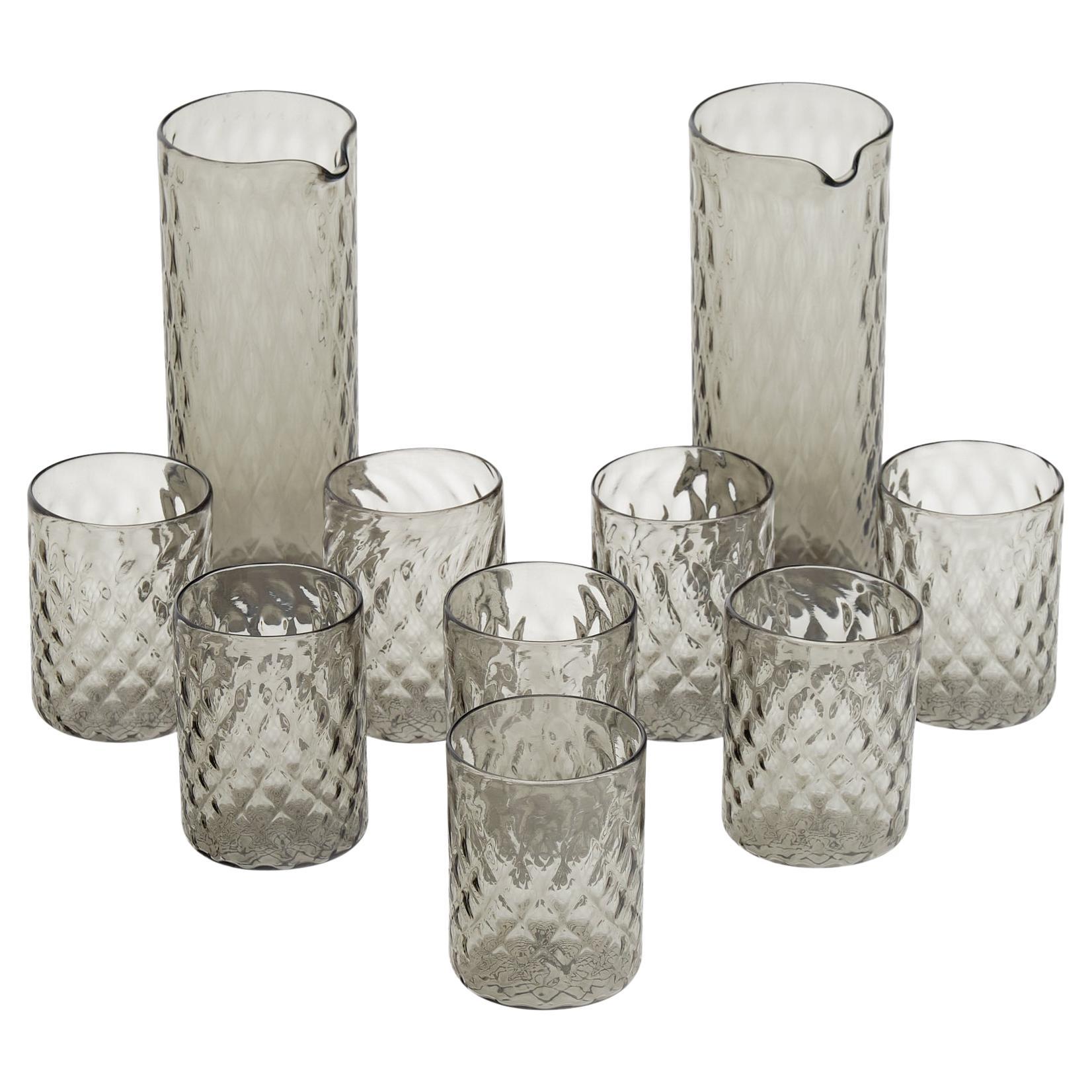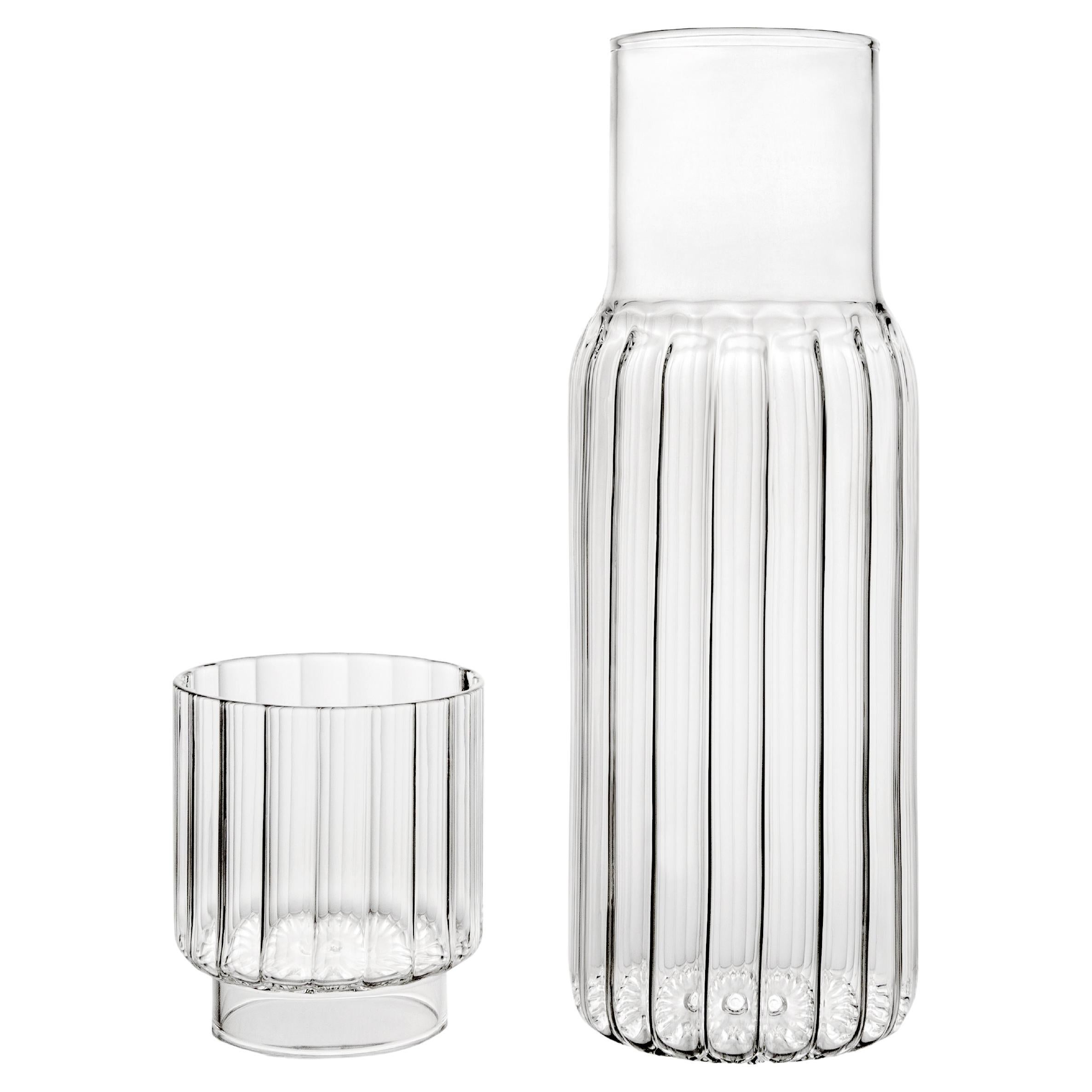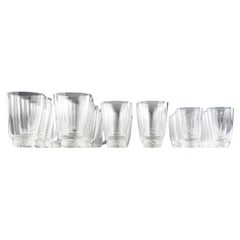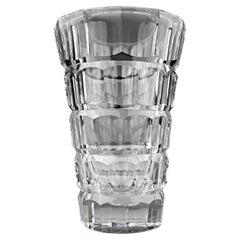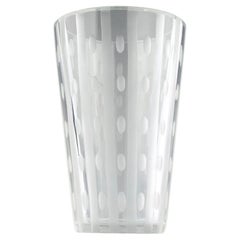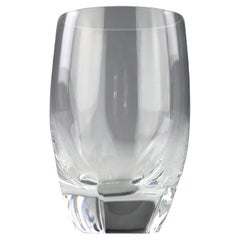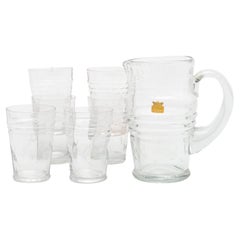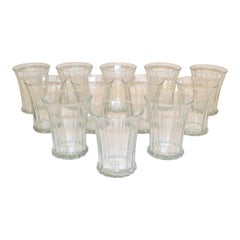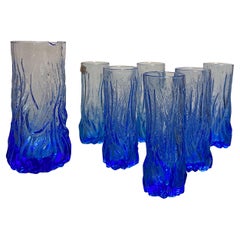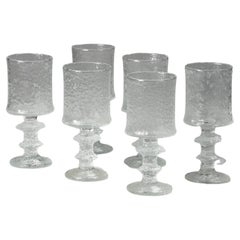Items Similar to Sawaya & Moroni, Water Glasses, Italy, 2000s
Want more images or videos?
Request additional images or videos from the seller
1 of 11
Sawaya & Moroni, Water Glasses, Italy, 2000s
$1,476.82per item
$2,185.69per item32% Off
£1,106.96per item
£1,638.31per item32% Off
€1,250per item
€1,850per item32% Off
CA$2,028.89per item
CA$3,002.76per item32% Off
A$2,265.07per item
A$3,352.30per item32% Off
CHF 1,186.86per item
CHF 1,756.56per item32% Off
MX$27,726.67per item
MX$41,035.47per item32% Off
NOK 15,073.16per item
NOK 22,308.28per item32% Off
SEK 14,212.08per item
SEK 21,033.87per item32% Off
DKK 9,515.46per item
DKK 14,082.87per item32% Off
Quantity
About the Item
Six beautifully thin Sawaya & Moroni crystal water glasses, Italy circa 2000. In their original box, with reinforced padding.
Dimensions in cm ( H x D ) : 8.2 x 9.3
Secure shipping.
"Sawaya & Moroni emerges on the international design scene in 1984 relatively quickly combining professional talent of architect and designer William Sawaya with entrepreneurship of Paolo Moroni. The company is now set as a manufacturer of high quality design furniture.
Both partners are from areas unrelated to the furniture, so the lack of family’s tradition to be respected and passed, typical of this area, becomes a positive element, free from all conceptual and productive restrictions. Thanks to this freedom borns a collection of limited editions signed by the great protagonists of contemporary architecture, design and art, together with a multitude of furniture, silver and artifacts that have found place in private collections and design museums around the world.
Every product has a story. In the course of our century, artistic values have gradually seeped into a variety of fields, so that artistic significance has come to be attributed to many objects originally designed for other purposes. The extremes of the aesthetically-inclined transformations of practically any object and product can be found in various artistic movements. One of these is Dada, which paradoxically invited the observer to see the most everyday of industrial products as works of art. Another one was Pop Art, which channelled the stream of media images and mass consumption products towards the mill of art. In Italy, we also had the Poor Art movement, whose aim was to use art to salvage even the least valuable of industrialised society's cast-offs, such as the poor materials of iron, paper and brick.
The wisdom of hindsight demonstrates the logic behind these development: with a certain degree of arrogance, artistic quality was attributed by the market in opposition to the material value of the work and above all in contrast to the actual work put into achieving the final result. This was certainly one of the more unreasonable and provocative phenomena of our age, as art seemed to have become a way of a tributing an excessive value (firstly aesthetic, but as a consequence also economic) to an object that had a precious little intrinsic value in terms of materials, technique and work.
Today's presentation of a collection of artistic silver pieces is therefore a challenge to this attitude. Each object in the collection - whether a candlestick or a fruit bowl, a tray or a caraffe - is practically unique, strongly individual and exceptional, unlike the "multiple" approach and the widespread technical reproduceability so much used and abused in the arts. But in this collection of silver, it is not so much the quality of the material that defines the character of the product as the accumulation of a long, slow, complex process of elaboration and work, an approach that turns on its head the concept of attributing value to a work of art in a purely arbitrary way, by conferring aesthetic status on technically poor objects created without any mastery.
Every one of these silver object has the uniqueness of a prototype, as each of them is practically handmade. Although production is preceded by a detailed design study, the results are achieved individually by the complex process of hand craftsmanship, right down to the tiniest detail. The architects and designers who designed the collection are well-known and highly authoritative. But the contribution made by the craftsmen to converting the design into a product enjoys an equal quality and authority, although they are less well-known. Although these pieces are the results of layer upon layer of such profound design conception, craftsmanship and artistic care that they are worthy of display in a museum, this does not mean that they neglect their 1'unctional objectives: an authentic work of art need not fear being used.
A tray or a candlestick made in this way is a "noble" object and a work of art by virtue of this way of blending the conceptual design and the creative process. In this way, each of these silver objects tells a story. These are not pieces designed once and for all and then mass-produced by an industry that uses contemporary artistic misunderstandings to spread and increase they value.
The pieces presented here are all unique, each one always has a story to tell: the story that has brought them individually to their visible result, just like the portrait that each one of us has of ourselves, which tells how we have developed as individual human beings.
The brand Sawaya & Moroni is mainly known for his research and conceptual design for its daring collaborations with architects such as Jean Nouvel, Daniel Libeskind, Dominique Perrault, Michael Graves, OM Ungers, Massimiliano Fuksas, Zaha Hadid, Charles Jencks, Kazuo Shinohara, Ettore Sottsass, Adolfo Natalini, Jakob + MacFarlane, Hani Rashid, Mario Bellini, Jean-Michel Wilmotte, but also for design projects as well as signed by the same William Sawaya from designers or artists such as Ron Arad, Michael Young, Richard Hutten, John Maeda, Toshiyuki Kita, Borek Sipek, Toni Cordero, Platt + Young, Christian Ghion, Mario Cananzi, Jeannot Cerutti, Terry Dwan, Matt Sindall, Veit Streitenberger, Luigi Serafini, Marco Mencacci, Tim Watson, Setsu + Shinobu Ito, and others." - Sawaya & Moroni Website
- Creator:Sawaya & Moroni (Designer)
- Dimensions:Height: 3.23 in (8.2 cm)Diameter: 3.67 in (9.3 cm)
- Style:Modern (Of the Period)
- Materials and Techniques:
- Place of Origin:
- Period:
- Date of Manufacture:2000s
- Condition:
- Seller Location:PARIS, FR
- Reference Number:1stDibs: LU8131233636972
About the Seller
5.0
Vetted Professional Seller
Every seller passes strict standards for authenticity and reliability
Established in 2020
1stDibs seller since 2023
17 sales on 1stDibs
Typical response time: 1 hour
- ShippingRetrieving quote...Shipping from: PARIS, France
- Return Policy
Authenticity Guarantee
In the unlikely event there’s an issue with an item’s authenticity, contact us within 1 year for a full refund. DetailsMoney-Back Guarantee
If your item is not as described, is damaged in transit, or does not arrive, contact us within 7 days for a full refund. Details24-Hour Cancellation
You have a 24-hour grace period in which to reconsider your purchase, with no questions asked.Vetted Professional Sellers
Our world-class sellers must adhere to strict standards for service and quality, maintaining the integrity of our listings.Price-Match Guarantee
If you find that a seller listed the same item for a lower price elsewhere, we’ll match it.Trusted Global Delivery
Our best-in-class carrier network provides specialized shipping options worldwide, including custom delivery.More From This Seller
View AllAfter René Lalique for Lalique, "St-Hubert" Crystal Service (42 Pieces), 1970s
By René Lalique, Lalique
Located in PARIS, FR
Beautiful 1950s reedition by the Lalique Manufacture of René Lalique's St-Hubert crystalware service. Composed of 14 water glasses, 14 red wine glasses and 14 white wine glasses, for...
Category
Vintage 1950s French Art Deco Crystal Serveware
Materials
Crystal
Daum, Faceted Vase, 1960s
By Daum
Located in PARIS, FR
Superb Daum crystal faceted vase from the 1960s. Signed Daum # Nancy.
Good condition.
Dimensions in cm ( H x D ) : 24.5 x 17
Secure shipping.
The Daum M...
Category
Vintage 1960s French Mid-Century Modern Vases
Materials
Crystal
$2,185 Sale Price
43% Off
Saint-Louis, Vase, France 2000s
By Saint Louis
Located in PARIS, FR
Superb and large Saint-Louis crystal vase, France 2000s. Decorations of carved and sanded lines and ovals. Stamp of the manufacture.
Very good cond...
Category
Early 2000s French Mid-Century Modern Vases
Materials
Crystal
Lalique France, "Highland" Cocktail/Water Glass, France 1980s
By Lalique
Located in PARIS, FR
Beautiful and large Lalique France ‘Highland’ cocktail glasses. Sold individually, 18 available.
In excellent condition.
Dimensions in cm ( H x D ) : 13.5 x 9
Secure shipping
Category
Vintage 1980s French Mid-Century Modern Crystal Serveware
Materials
Crystal
Lalique France, "Highland" White Wine Glasses, France 1980s
By Lalique
Located in PARIS, FR
Set of five Lalique France ‘Highland’ white wine glasses.
In excellent condition, one with small chip.
Dimensions in cm ( H x D ) : 9.4 x 6.5
Secure shipping
Category
Vintage 1980s French Mid-Century Modern Crystal Serveware
Materials
Crystal
Lalique After René Lalique, Six Fontainebleau Water Glasses, France 1950s
By René Lalique
Located in PARIS, FR
Beautiful Lalique Fontainebleau champagne set of six. Other wine glasses from the same collection are available in the shop.
In very good condit...
Category
Vintage 1950s French Art Deco Glass
Materials
Crystal
You May Also Like
Set of 7 Antique Spanish Water Glasses and Jar, circa 1950
Located in Barcelona, ES
Set of seven antique Spanish glasses and water jar. Made by unknown manufacturer in Spain, circa 1950. In original condition, with minor w...
Category
Vintage 1950s Spanish Mid-Century Modern Glass
Materials
Glass, Cork
Set 12 Blown Bubble Glass Mid-Century Modern Drinking Glasses Glassware, Italy
Located in Miami, FL
Set of 12 Mid-Century Modern heavy blown bubble glass drinking glasses, glassware, stemware made in Italy.
In excellent condition.
A-976-335
Category
Vintage 1980s Italian Mid-Century Modern Tableware
Materials
Blown Glass
Italian Mid-Century Modern Drink glasses with carafe
Located in Palermo, PA
Enhance your beverage experience with this exquisite collection of six drink glasses with carrafe. Crafted in the stylish and elegant fashion of the 1970s. These glasses showcase a c...
Category
Mid-20th Century Italian Mid-Century Modern Glass
Materials
Crystal
Scandinavian Modern Model Festivo 2140 Glasses by Timo Sarpaneva For Iiittala
By Iittala, Timo Sarpaneva
Located in Helsinki, Uusimaa
Scandinavian Modern model Festivo 2140 glasses (6 pieces) by Timo Sarpaneva For Iittala, 1970s, glass, good vintage condition, minor wear consistent with age and use. The glass pedes...
Category
Vintage 1970s Finnish Scandinavian Modern Glass
Materials
Glass
Murano Glass Drinking Set
Located in Austin, TX
Water drinking set of Murano glass; featuring 8 glasses and 2 pitchers.
Category
20th Century Italian Mid-Century Modern Glass
Materials
Murano Glass
$1,610 Sale Price
30% Off
Contemporary Glass and Carafe Set by Agustina Bottoni — Handmade in Italy
By Agustina Bottoni
Located in Milano, IT
The linear form of the PILLAR carafe is inspired by architecture, and characterized by an understated yet imposing appeal.
A PILLAR tumbler glass is included in the set, serving as ...
Category
2010s Italian Art Deco Barware
Materials
Glass
More Ways To Browse
International Silver Company Tray
Silver Presentation Tray
Nouvel Glass
Architectural Salvage Cast Iron
Cast Iron Strong Box
Sottsass Fruit Bowl
D Cerutti
Paul Wegner Sculptor
Ruby Glassware
Val St Lambert Bird
Venetian Decanter
Venetian Glass Decanter
Antique Mary Gregory
Austrian Glassware
Cut Glass Punch Bowl
Harrach Glass
Russian Pattern Cut Glass
Waterford Crystal Made In Ireland

